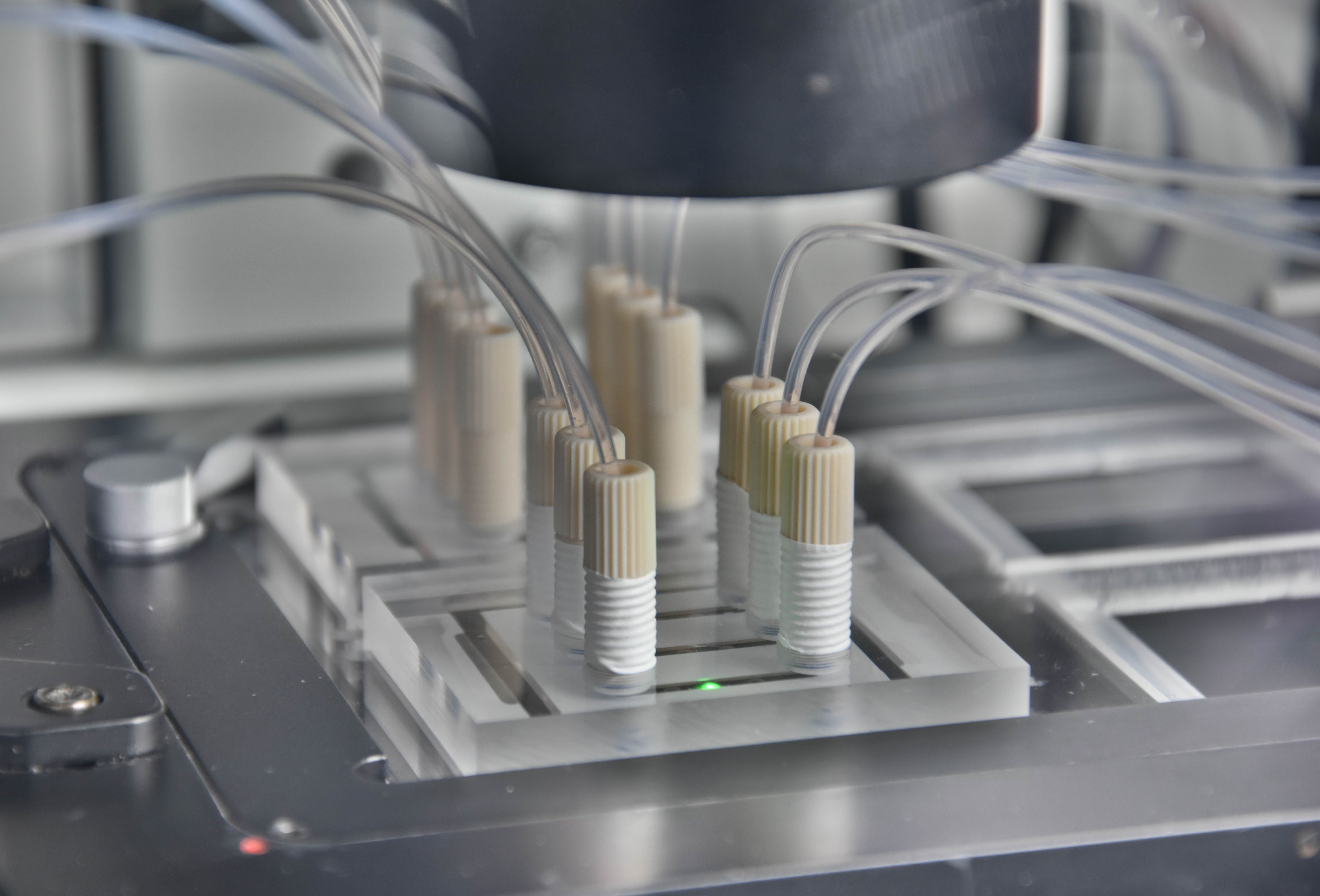Powerful methods for the analysis of cells allow an ever deeper insight into cell biological processes and thus form the basis for many medical and biotechnological applications. A broad spectrum of methods for the cultivation and analysis of primary cells and cell lines is available at the institute. Cell culture laboratories of safety level S1 or S2 equipped with the most modern equipment and microscopes allow, among other things, working with blood and many other biological cell samples. We develop customized procedures according to your individual requirements and specifications and support you in your preclinical research projects as well as drug or medical device testing.

Range of services
- Development of chip-based microfluidic systems for contactless handling of cells
- Design and development of microbioreactors for the long-term cultivation of sophisticated cell models
- Integration of microsensors in microfluidic systems for real-time acquisition of cell media parameters (e.g. oxygen, pH value, glucose)
- Establishment of functional cell assays (e.g. proliferation, cytotoxicity, chemotaxis, neurite growth, stem cell differentiation, intracellular calcium, intracellular pH etc.)
- High-end optical microscopy e.g. highly sensitive fluorescence measurements, time-resolved fluorescence microscopy of living cell systems, near-surface microscopy (TIRF), confocal laser scanning microscopy (LSM), fluorescence recovery after photobleaching (FRAP)
- Non-contact handling of samples by means of optical tweezers (Laser Tweezers)
- Expression analysis using immune staining and Western blots
- Transfection with fluorescent fusion proteins, cell staining techniques (live/dead, cell compartments, membrane, cytoskeleton)
- Detection and quantification of cellular and proteinaceous blood components
 Fraunhofer Institute for Cell Therapy and Immunology, Branch Bioanalytics and Bioprocesses IZI-BB
Fraunhofer Institute for Cell Therapy and Immunology, Branch Bioanalytics and Bioprocesses IZI-BB